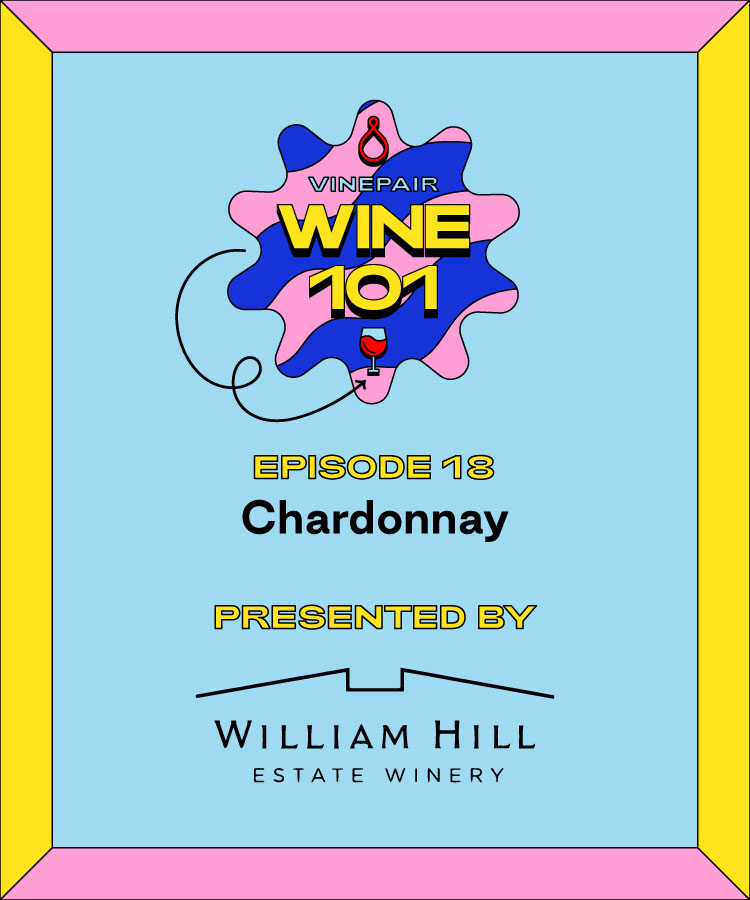Inspired by one of VinePair’s most popular site sections, the Wine 101 podcast takes an educational, easy-to-digest look into the world of wine. This episode of Wine 101 is sponsored by William Hill Estate Winery. To experience William Hill Estate Winery is to discover another side of Napa Valley. William Hill Estate Winery is a place where extraordinary vineyards are tucked away along the serene Silverado Trail. A place where you can still discover an incredible wine for the first time. A Napa Valley winery that is off the beaten path. At William Hill Estate, we believe the beauty of wine is in its simplicity, sincerity, sun, soil, and the power of human hands and minds. That’s the spirit in which we make our wines, staying as true to nature and its fruits as we can. William Hill Estate Winery, pair with life.
Welcome back to Wine 101. In this episode, VinePair tastings director Keith Beavers talks all about Chardonnay, discussing where the grape came from and explaining how American winemakers redefined Chardonnay into one of the world’s most popular white wine grape varietals. Chardonnay originated in the Burgundy region of France, where it is now known as white Burgundy. It was in Burgundy that the malleability of Chardonnay became apparent, as it takes on different textures and flavors depending on where it’s grown in the region. For example, in the subregion Mâconnais, the wine is best drunk young and takes on aromas of apple and pear. In the Côte de Beaune subregion, however, the wine can range from soft and buttery with minerality, to broad with dark, oaky, caramel notes — depending on the vineyard.
The grape soon spread throughout the world. In France, winemakers began using it as a dominant grape in Champagne, eventually influencing those in the Cava region of Spain to embrace it in their sparkling wine as well. But, as Beavers explains, it wasn’t until the 1940s that Chardonnay became the wine American drinkers see in stores today. That’s all thanks to a clone developed by the Wente brothers — known as the Wente Clone — that allowed the grape to thrive in the state’s sunny climate, thus enabling California winemakers to begin growing the grape.
In a 1976 contest held just outside of Paris, a California Chardonnay won out over a white Burgundy, thus establishing California as a legitimate winemaking region. By the 1980s, plantings of the grape quadrupled, and California became responsible for the Chardonnay Americans know and love.
Follow Keith Beavers on Instagram
